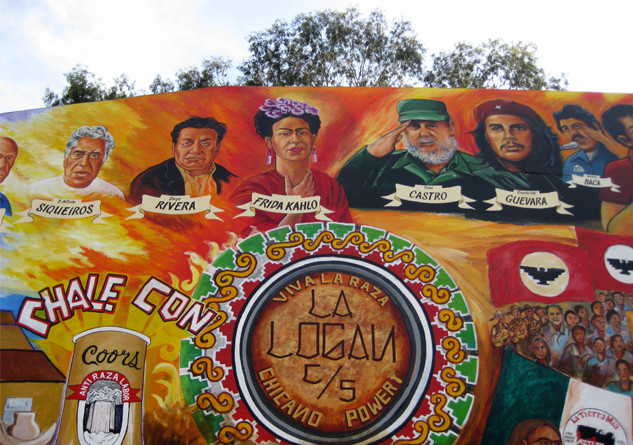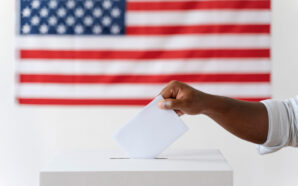Hilbert Morales / EL OBSERVADOR
Many in the Chicano-Latino-Hispanic Silicon Valley communities do not know much about the diversity in their community. Also, many public policy decision-makers treat “Hispanics” as a homogeneous population. Nothing could be further from the reality being experienced by the individuals who make up that cohort which has been studied by Matt A. Barreto and Gary M. Segura.
Matt A. Barreto, Ph.D., is a Professor with UCLA’s Chicana/o Studies and Political Science Departments. Barreto’s research examines the political participation of racial and ethnic minorities in USA. Barreto’s work has been published in many publications.
Gary M. Segura is a Professor of Public Policy, Stanford University. His work focuses on issues of political representation and social cleavages, the domestic politics of wartime public opinion, and the politics of America’s growing Latino minority.
Barreto and Segura co-authored the book entitled: Latino America: How America’s Most Dynamic Population is Poised to Transform the Politics of the Nation with Matt A. Barreto (Public Affairs Press, 2014).
EO’s readers are encouraged to google both Matt A. Barreto and Gary M. Segura who are considered the most accomplished experts about “Chicanos, Latinos, and Hispanics”. This Op-Ed is based upon their work which establishes the diversity of USA’s Hispanic community. A challenge is the development of a “PAN-LATINO” relationship.
The largest Hispanic group is Mexican. Their Chicanos resided in California, Nevada, Arizona, Colorado, New Mexico, and Texas which became the American Southwest when the USA-Mexico border moved south to its present location in 1846 (Treaty of Guadalupe-Hidalgo). These folks are “American citizens of Mexican heritage”.
Another group are those migrants who entered America legally through entry points such as Ciudad Juarez/El-Paso or Tijuana/San Diego, CA.
A third group entered America illegally without visas. These are the undocumented who work and live ‘in the shadows’ of society. Much of the current political dialogue refers to these three groups as being one entity called “Mexican-Americans”. And too many individuals treat this entire group as being ‘undocumented immigrants’.
A Second group, Puerto Ricans, is derived from the Commonwealth of Puerto Rico which was acquired by America after the Spanish-American War (1898). They travel to and from New York freely because Puerto Ricans are already U.S. Citizens.
The Spanish-American War (1898) resulted in USA having control of Guam, the Philippines, while Cuba was permitted to become an independent nation. Today, Cuban-Americans are located mainly in Miami, Florida which was the destination of Cubans who fled from Cuba during and after 1958 when Fidel Castro successfully deposed Cuban dictator Fulgencio Batista. Communist Cuba and America had no foreign relationships for 50 years. Recently, U.S. President Barack Obama initiated steps towards normalizing foreign relationships with Cuba.
There are many Latino migrants from Central and South America’s 21 nations. Many are refugees who have fled corruption, violence, and seek asylum, security and opportunity.
Recent data (2010) revealed that 37.6% of all Latinos are foreign-born while 15.5% of the total American population are ‘Hispanic’. Nativity data (2007) revealed that the total Latino population of 45,378,600, 56.3% had been born in USA and 43.7% were ‘foreign-born’.
The 2007 data show that Mexicans comprised 29,189,300 individuals; Puerto Ricans were 4,114,700 individuals; Cubans were 1,608,800 individuals; Salvadorians: 1,473,500; Dominicans: 1,198,800; the remaining balance are from sixteen other nations.
These Latinos experienced violence; economic oppression; dictatorships; Marxist communism, and marginalization. In addition, consider that each nation has different cultural norms; traditions; and language styles. Many were members of indigent tribes which were oppressed. stigmatized or marginalized. In addition, American corporations made investments which favored the elite of each nation and exploited their nation’s natural resources.
It is totally illogical for any strategists to deal with these very diverse Latino groups without investing some effort ‘in getting to know much more about them’. Latinos have been profiled by political decision-makers as citizens who do not vote. Today, 34% of the Latino population is under the age of 18; 93% are citizens by birthrights; only 1% are naturalized citizens.
It is this youthful Latino group who will choose the next U.S. President; and determine the makeup of the U.S. Congress during the 2016 elections…if they decide to become stakeholders and constituents by voting in the large numbers already possible.
If Latinos aspire to achievements leading to the ‘American Dream’, they must vote in order to become influential stakeholders who may define their own destiny.
Latinos must understand two things: 1) They are tied together by their history; 2) They are the ‘swing vote’ which will select and elect officials who must be held accountable and responsible to them as constituent stakeholders. Latinos will ‘belong’ when they vote and demand equity in all matters…social, political, and economic. Their strength is their diversity, belief in governments role and resilience.






